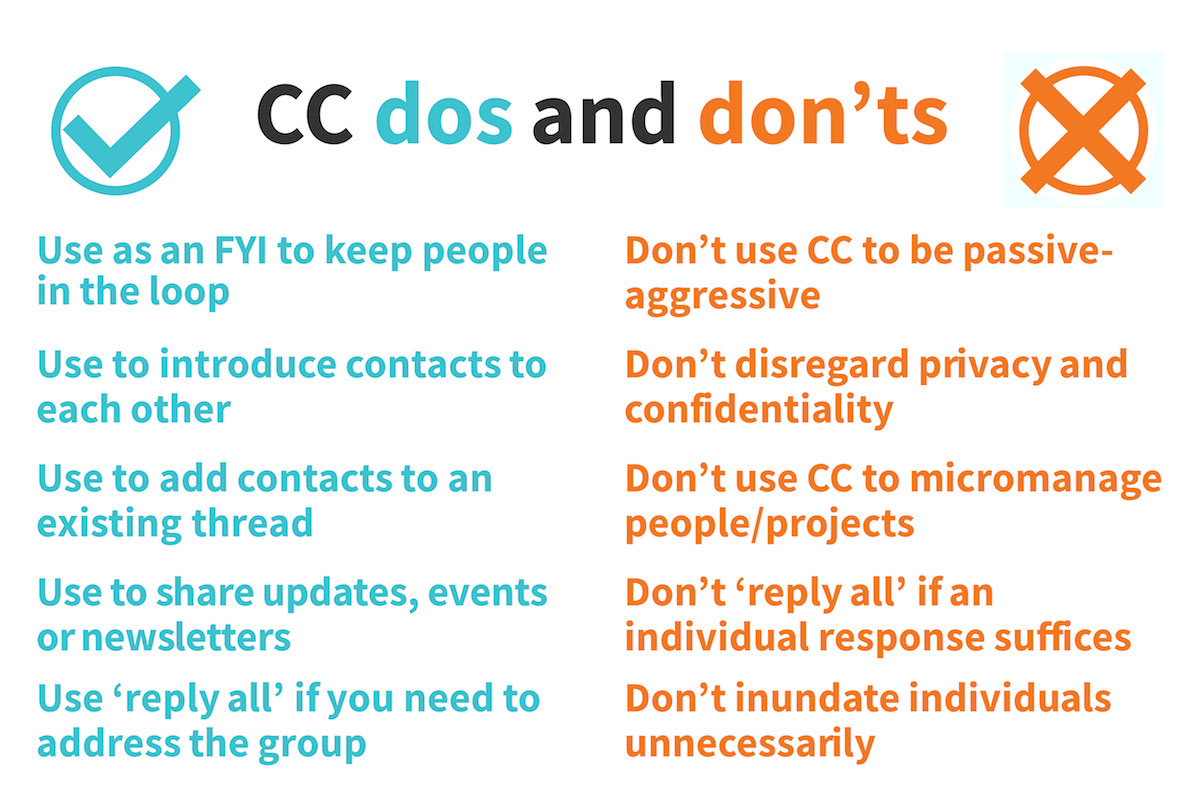News & Views

Enough of the CCs! Reducing email overload
Email overload can be a significant cause of stress in the workplace. Too many emails lead to overlooked messages, missed deadlines, overwhelm and anxiety. The theme of this year’s Mental Health Awareness Week is reducing anxiety and one way to do this is by minimising email overload in the work setting.
What exacerbates the problem is when you consider the significant amount of unnecessary emails people send and receive. The volume of emails is often because of the carbon copy (CC) function. So how, why and when should you CC colleagues? Equally importantly – when shouldn’t you?
Sometimes, face-to-face communication, a phone call or even a note shoved in staff room in-trays is preferable. Consider one simple question: do I really need to send this email? When you consider the negative impact of email overload on already time-strapped hardworking staff, there is a good case for requesting email protocols or at least guidelines.
Many emails fall into the category of information giving and sharing of messages. Examples range from lost PE kits to the location of pastoral meetings. Some emails should have been brief conversations in the corridor/staffroom; some are items that colleagues should discuss in meetings rather than via a verbose late-night monologue.

Carbon copying
The new and expanding category seems to be the 'carbon copy' (CC) email. During and following the COVID-19 pandemic, email habits inevitably changed. There was an unequivocal need to copy line managers and senior leaders into emails at previously unseen levels for a while. Proponents of the carbon copy would point to its helpful ability to keep line managers in the loop and informed; its detractors would question the real motivation of CC users.
1. To embarrass the recipient for not doing something
Sometimes a CC-ed email highlights when a colleague has slipped momentarily with their administration. For example, if someone fails to add an assessment to an online platform by a deadline. It’s erring on the side of overkill to then highlight this by emailing the whole department with a CC to the headteacher. We all recognise the importance of deadlines; however, a conversation in the first instance may be much more helpful, appreciated and impactful.
2. As a power move
This type of CC is the equivalent of telling tales. These emails usually land in leaders' email inboxes far too quickly, following the smallest of issues that colleagues could easily resolve via a face-to-face conversation. Of course, there will be occasions where it’s necessary to highlight issues, suboptimal performance and incomplete tasks: discerning when is the key here.
Where the culture is less than optimal and accountability reigns supreme, teachers and leaders may feel (or have been told) to cover themselves to ensure they have evidenced their actions. When you unpick these issues later, it is often the case that no face-to-face conversations took place. This breeds confusion and mistrust and erodes positive culture. Staff members subject to escalation are less likely to acknowledge gaps in knowledge or mistakes and relationships suffer. The power move cc may resolve the initial issue, but it can cause further problems down the line.
3. To show line managers how hard the sender is working
CC-ed emails sent well into the evening and throughout the weekend may show how dedicated and hardworking the sender is. However, they may be a false proxy for effectiveness and an unreliable indicator of task completion. If line management is effective and offers opportunities for feedback on the school's priorities, then ample discourse and discussion will occur. These powerful conversations will provide teachers with recognition, feedback and actions.
Face-to-face meetings and discussions will build a positive culture, recognising the monumental efforts of teachers towards collective goals. They should minimise the need for daily updates and avoid the risk of mistaking activity for effectiveness.
A counterargument regarding the restriction of email windows was that teachers should be able to work flexibly and at any time that suits them best. It's a fair point. However, is it reasonable for one teacher's work to impinge on other teachers/leaders in the evenings and weekends? Email is not work in that sense: it is one method of communication and there are others. Teachers work incredibly hard and if the culture is right, there should be no need to overtly demonstrate this by carbon-copying all emails to a line manager.

4. To prove you knew about something
Where issues and incidents are serious enough to warrant potential escalation, the CC function is often used as an early warning system to alert line managers of an impending problem.
It is often better to deliver this type of message face-to-face: it's possible to misunderstand issues in written text. Also, the opportunity to talk through them often gives another perspective and can nip problems in the bud. The scattergun effect of the CC function means the sender often copies in various colleagues who all may set off in disparate activities attempting to resolve the situation – creating more work and confusion.
In the interests of balance, it is helpful for leaders to be informed as early as possible about any issues. When using emails for this purpose, a direct email to the line manager ensures they will address the matter and make a clear record. These emails are frequently categorised in another category – the 'blind carbon copy' (BCC).
5. To be helpful
Finally – this is the most genuine motivation for anyone sending a CC-ed email. It is helpful for the sender as it saves time writing out a bespoke, specific email to a colleague and advantageous for the recipient as it keeps them updated and informed about issues.
This is the true purpose of the CC-ed email. If these emails were kept to a minimum and focused only on critical communications, CCs could again be useful. The CC all staff email falls into this category. Often people don't read these emails and their effectiveness could be better. Does every staff member need to know that the window of a blue Vauxhall Astra is slightly open or that a parent has returned a call but isn't sure from who?

Tips to avoid email fatigue
- Consider using other means to communicate, depending on how quickly you need an issue resolved. Try face-to-face, phone or even text.
- Allocate specific times to ‘batch check’ and respond to your emails.
- Be ruthless and declutter your inbox. Treat your inbox as a to-do list and adopt an email management best practice such as the Inbox Zero Method.
- Filter your emails and organise them using email folders. Give them meaningful titles and ‘file’ your emails appropriately in case you need to re-reference the content.
- Audit and unsubscribe from emails that are irrelevant and become ‘noise’.
- As well as using the CC function sparingly, apply the same logic to ‘reply all’.
- Agree on an email strategy and guidelines with your colleagues. Decide what is truly necessary to communicate and with whom.
Sometimes, lightening the little tasks can significantly impact overworked colleagues as positive steps to improving their wellbeing. So, in the interest of work–life balance and establishing a more positive work culture, perhaps it is time to suggest that your school considers minimising the use of CC-ed emails and advocating a set of guidelines regarding email etiquette and times.
About the author
George Bowling is an experienced senior leader and educational author, still actively teaching in a secondary academy in England.